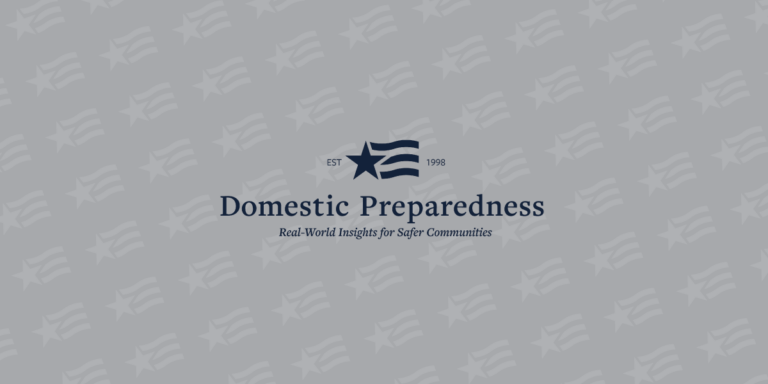
Author Archive

The American Flood Coalition created the Dual Disaster Handbook to help community leaders coordinate a proactive response to flooding during COVID-19. Drawing on case studies and best practices from emergency management professionals, the handbook presents six actionable recommendations for local leaders responding to a flood during COVID-19. https://floodcoalition.org/
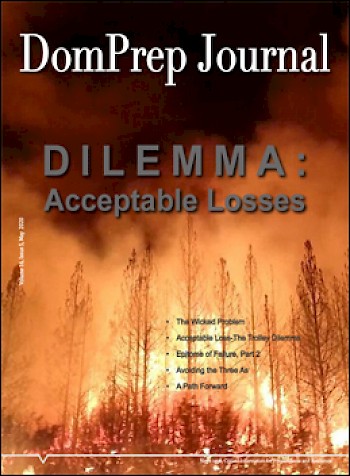
May 2020
Domestic Preparedness
May 27, 2020
Featured in this issue: Disasters & Their Acceptable Losses, By Catherine L. Feinman; The Wicked Problem of Lifting Social Distancing & Isolation, By Galen Adams & Jeremy L. Kim; The Acceptable Loss – The Trolley Dilemma of Managing COVID-19 Pandemic, By Isaac Ashkenazi & Carmit Rapaport; The Epitome of Failure

How States Pay for Natural Disasters in an Era of Rising Costs
Domestic Preparedness
May 19, 2020
This report outlines the role states play in paying for disasters and key findings about the approaches they take to budgeting for natural catastrophes. The intent is to help all levels of government be ready to meet immediate needs, cover the costs of long-term recovery efforts, and invest in preparedness
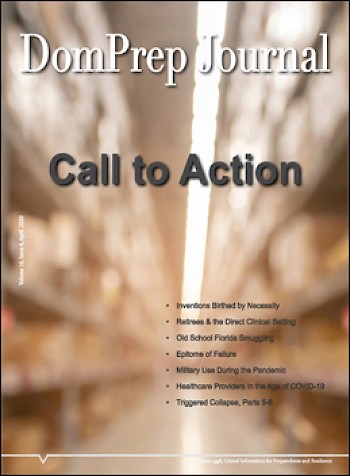
April 2020
Domestic Preparedness
April 29, 2020
Featured in this issue: Call to Action for “Unprecedented” Events, By Catherine L. Feinman; Letter From the Publisher, By Martin Masiuk; Inventions Birthed by Necessity, By Daniel M. Gerstein; Use Caution: Retirees & the Direct Clinical Setting, By Matthew Minson; A Family Tradition – Old School Florida Smuggling, Chapters 14-16,

Public Health Principles for a Phased Reopening During COVID-19: Guidance for Governors
Domestic Preparedness
April 21, 2020
As the COVID-19 pandemic continues to progress, most jurisdictions have implemented physical distancing measures to reduce further transmission, which have contributed to reductions in numbers of new cases. This report considers transmission risks and proposed measures for phased reopenings by decision makers at the state level. http://www.centerforhealthsecurity.org/our-work/pubs_archive/pubs-pdfs/2020/reopening-guidance-governors.pdf

Disaster Financial Management Guide
Domestic Preparedness
April 20, 2020
This guide identifies the capabilities and activities necessary to prepare and successfully implement disaster financial management while maintaining fiscal responsibility throughout response and recovery operations. The principles, concepts, and resources contained in the guide can support jurisdictions in identifying the resources needed to support their community, increase the efficiency of
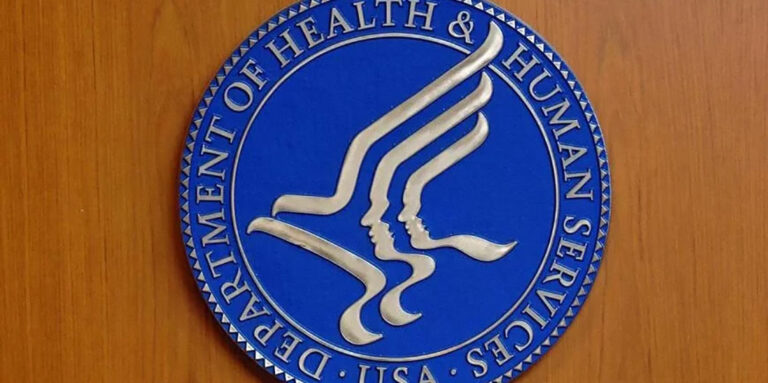
HHS Accepts Donations of Medicine to Strategic National Stockpile
Domestic Preparedness
March 29, 2020
(Released 29 March 2020) The U.S. Department of Health and Human Services (HHS) today accepted 30 million doses of hydroxychloroquine sulfate donated by Sandoz, the Novartis generics and biosimilars division, and one million doses of chloroquine phosphate donated by Bayer Pharmaceuticals, for possible use in treating patients hospitalized with COVID-19 or for
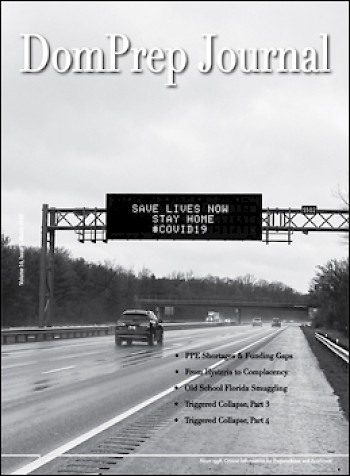
March 2020
Domestic Preparedness
March 25, 2020
Featured in this issue: Resilience When Help May Not Be on the Way, By Catherine L. Feinman; PPE Shortages & Funding Gaps for Pandemics, By Greg Burel; From Hysteria to Complacency, Then Back Again, By James M. Rush Sr.; A Family Tradition – Old School Florida Smuggling, Chapters 6-13, By

Earthquake Safety at Home
Domestic Preparedness
March 17, 2020
A new FEMA publication, “Earthquake Safety at Home,” identifies why and where earthquakes might occur and how readers can “prepare, protect, survive, respond, recover, and repair” from an earthquake. The guide discusses wide-ranging steps that readers can take to adequately prepare and protect themselves, their family, and their belongings. https://www.fema.gov/media-library-data/1582663331734-d055b587ee74e6e5cd9c9cd14e80020d/FEMAP-530_EQSafetyatHome_508.pdf
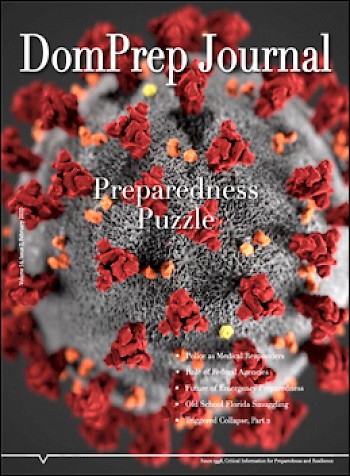
February 2020
Domestic Preparedness
February 26, 2020
Featured in this issue: Solving the Preparedness Puzzle, By Catherine L. Feinman; Police as Medical Responders in Active Threat Events, By Charles H. Kean; Poll and Comment: What role should federal agencies have in a disaster?, By Martin (Marty) Masiuk; The Future of Emergency Preparedness, By William H. Austin; A
Follow Us
Get Instant Access
Subscribe today to Domestic Preparedness and get real-world insights for safer communities.
ARchives
Article Out Loud – Radiological Emergencies – Public Health Responsibilities/Challenges
February 7, 2023
The U.S. public health community is tasked with more roles and responsibilities than ever before in the nation’s history. That community may soon have to take on even more responsibilities during a radiological emergency. Uncovering the gaps and challenges involved may help in moving toward realistic operational planning without continuing
Article Out Loud – Reducing Weather Anxiety Among Emergency Managers
February 7, 2023
Imagine this scenario. A tornado watch has been in effect for the past six hours. The severe thunderstorm warning expires as the squall line passes over the area, which escaped significant severe weather. Although the Storm Prediction Center shows the area has been downgraded from enhanced to marginal, the Day
Article Out Loud – Winter Storm – Reimagining Recovery Using Support Functions
February 1, 2023
Out of first-time events come many important lessons learned. For example, information must be disseminated using familiar terminology when an unfamiliar event occurs. In addition, recovery is a team effort that begins before the event has ended. Learn how the third most populated county in the United States handled recovery
Article Out Loud – Threat Assessment and Management: Practices Across the World
February 1, 2023
In 2021, the number of terrorist attacks increased 17% from the previous year. As actors adapt and change their tactics and techniques, cities must develop new capabilities to counter these threats. This article explores notable global practices to help cities develop or enhance their threat assessment and management programs.
Article Out Loud – Leadership Consciousness: A Call to Action
January 31, 2023
Being a great leader requires much more than just a title. True leaders build a solid foundation on honor and respect, which includes building rapport with others and being aware that all actions have consequences. Emergency management and public safety officials all have the ability to be “leaders” and agents
Article Out Loud – Finding Beds in the Middle of a Disaster
January 31, 2023
In 2012, an EF5 tornado ripped through Joplin, Missouri, destroying 8,000 buildings, killing 160 citizens, and injuring almost a thousand. Here is the heroic story of how medical professionals and emergency responders in the area – with the help of local volunteers – used community-based planning to save lives
Article Out Loud – Crisis Standards of Care – A Mental Health Perspective
January 25, 2023
During a disaster, responders face many challenges and must make difficult decisions. For health care professionals, accepting a sufficient standard of care during a crisis may be the most difficult. This mental health perspective provides some key points to consider before the next crisis occurs.
Article Out Loud – Applications for a Newly Developed Risk and Resilience Tool
January 25, 2023
A new, publicly available tool provides a window into how future climate realities could affect U.S. cities and towns. Learn how planners and decision-makers can get map-based analyses driven by peer-reviewed climate data using this free portal.
Article Out Loud – The Pony Express Rides Again
January 18, 2023
When supply chains were diminished during the coronavirus pandemic, leaders had to find innovative ways to protect their communities. In Texas, they used the Pony Express model to ensure the delivery of personal protective equipment, critical supplies, and vaccines to those in need.
Article Out Loud – Virtual Reality Training Revolution Is Here
January 18, 2023
Training is often a check-the-box task. However, it can be difficult to know how much training was learned. Virtual reality and its related analytics provide a way to heighten participation and monitor learning levels for numerous threat scenarios.
Follow Us
Get Instant Access
Subscribe today to Domestic Preparedness and get real-world insights for safer communities.


